- Quick Read
- Deep Read ( 7 Min. )

Why is Christian Science in our name?
Our name is about honesty. The Monitor is owned by The Christian Science Church, and we’ve always been transparent about that.
The Church publishes the Monitor because it sees good journalism as vital to progress in the world. Since 1908, we’ve aimed “to injure no man, but to bless all mankind,” as our founder, Mary Baker Eddy, put it.
Here, you’ll find award-winning journalism not driven by commercial influences – a news organization that takes seriously its mission to uplift the world by seeking solutions and finding reasons for credible hope.
Explore values journalism About usIn Today’s Issue
- As vaccines roll out, states face difficult questions over access
- More American families struggling to afford food. Can food banks cope?
- Former Boko Haram fighters deradicalized, but still unreconciled
- The human touch: Choosing handcraft over machines
- Coat as shelter: Designer Bas Timmer creates for people who have no home
Monitor Daily Podcast
- Follow us:
- Apple Podcasts
- Spotify
- RSS Feed
- Download
TODAY’S INTRO
Hillbilly Hymn
 Mark Sappenfield
Mark Sappenfield
Appalachia is badly in need of a savior, it would seem. Economics confirm it, with 80 Appalachian counties classified as “distressed.” Netflix confirms it with its new film, “Hillbilly Elegy.” Appalachia is ground zero for the portrait of white lower-middle class collapse and deaths of despair.
Yet Cassie Chambers Armstrong, who grew up in the poorest county in Appalachia – and the United States – sees a different portrait. Yes, the problems facing Appalachia are severe. But the people also have gifts to share.
Ms. Armstrong is author of “Hill Women,” which chronicles the generations of strong, resourceful Appalachian women who helped her on her way to three Ivy League degrees. “The impression is that it is so broken that it can only be saved if outsiders swoop in to rescue it,” she tells me. But Appalachia “has all the skills it needs to solve its own problems.”
The answer is not in the false bootstrap narrative of people saving themselves, either, she says. It is in helping Appalachia build on its strengths – its resilience, its ingenuity, its deep community connections – and not treating it as a charity case. After all, Ms. Armstrong says, Appalachia has things to teach the rest of the country, too. In Appalachia, “you take a sense of ownership for people in your community and take care of them.”
Share this article
Link copied.

Help fund Monitor journalism for $11/ month
Already a subscriber? Login

Monitor journalism changes lives because we open that too-small box that most people think they live in. We believe news can and should expand a sense of identity and possibility beyond narrow conventional expectations.
Our work isn't possible without your support.
As vaccines roll out, states face difficult questions over access
Coronavirus vaccines will be rolling out soon, but not everyone will get instant access. States must balance competing priorities, from preventing deaths to keeping schools open.
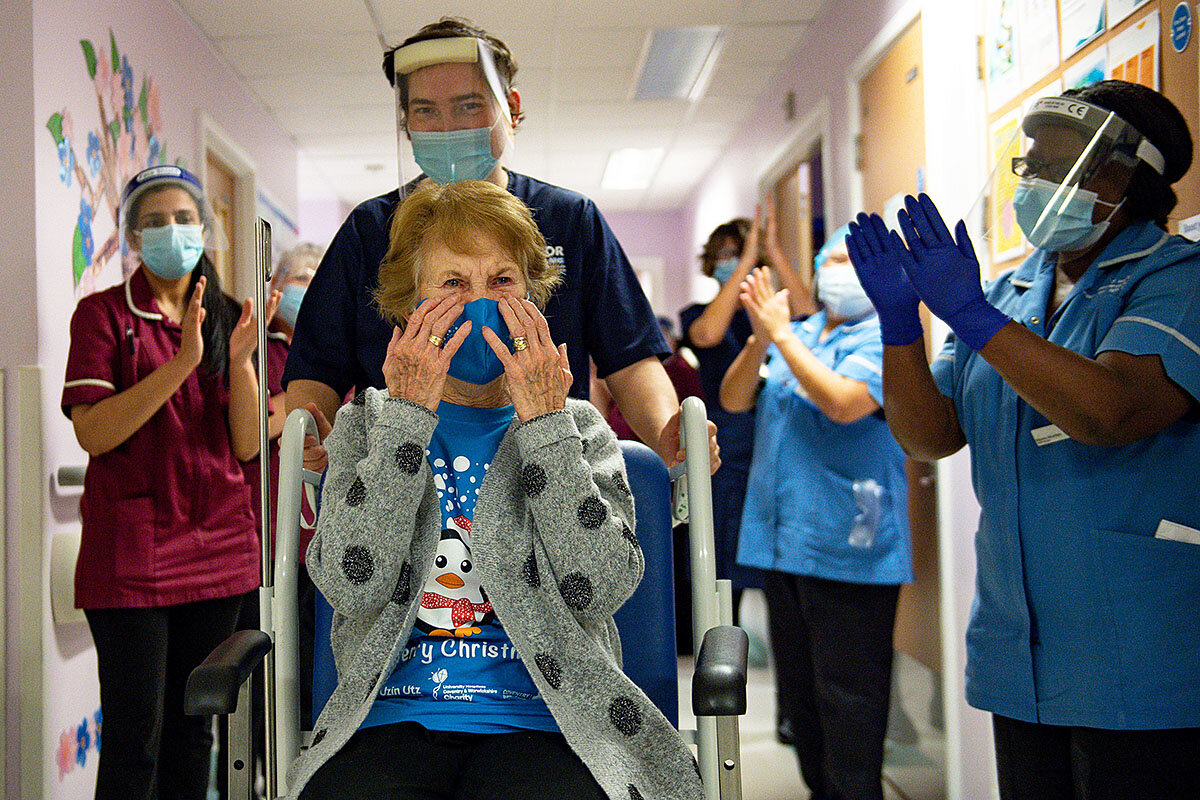
With the coming rollout of the first approved coronavirus vaccines, an advisory committee for the U.S. Centers for Disease Control and Prevention has issued a nonbinding recommendation to states on who should be first in line. The top tier includes front-line health care workers and residents of long-term care facilities, like nursing homes.
But after that, the issue gets more complicated. Should older Americans be prioritized, even if they are able to isolate? Where do teachers fit into the equation, or individuals who are incarcerated or living in a homeless shelter?
These questions could gain prominence in coming weeks as vaccines begin to roll out for public use. Any framework must balance three competing goals, explains Alta Charo, a professor of law and bioethics at the University of Wisconsin–Madison: preventing hospitalization or death, slowing the pandemic overall, and trying to return key areas of public life to full function.
“Each of those goals lead you to somewhat different ordering of your priorities, says Professor Charo. “Overlaying all of that is the general recognition that there are some groups that have been historically – and now by the pandemic currently – disproportionately burdened. ... It gets complicated because there is no right answer.”
As vaccines roll out, states face difficult questions over access
Charlotte Evans is avidly watching the news about coronavirus vaccines – and as soon as one is available to her, she’ll be lining up to get it.
An elementary school librarian in Rock Hill, South Carolina, Ms. Evans is at work five days a week, seeing six classes a day of children, who are otherwise tightly podded with their classroom teacher.
“This is a hard, hard way to teach,” says Ms. Evans, who also has a diagnosis that puts her in a higher-risk category. “For a lot of us it feels more like a race. Can we get the vaccine before we get COVID?”
Assuming the U.S. Food and Drug Administration approves it, the Pfizer vaccine will likely be available around Dec. 14. Moderna’s could be ready a week later. But with limited availability and high demand, one of the top questions has been just who the vaccines will go to. It’s up to states to make those decisions.
Last week, the Centers for Disease Control and Prevention’s Advisory Committee on Immunization Practices issued a nonbinding recommendation for the top tier of vaccine recipients: front-line health care workers and residents of long-term care facilities, like nursing homes. And there has been widespread consensus that those are the populations who should be at the front of the line.
But after that, it gets more complicated. Should older Americans be prioritized, even if they are able to isolate? What about younger, lower-risk individuals whose jobs present opportunity for exposure? Where do teachers fit into the equation, or individuals who are incarcerated or living in a homeless shelter? Should allocation guidelines prioritize protecting at-risk individuals or getting society back to a semblance of normal functioning? And how will they fairly treat many disadvantaged populations who have suffered disproportionately under the pandemic?
Any framework for allocation is trying to balance three competing goals, explains Alta Charo, a professor of law and bioethics at the University of Wisconsin–Madison: preventing hospitalization or death, slowing the pandemic overall, and trying to return key areas of public life to full function.
“Each of those goals lead you to somewhat different ordering of your priorities, says Professor Charo, who served on the National Academies committee that produced a report on equitable vaccine allocation. “Overlaying all of that is the general recognition that there are some groups that have been historically – and now by the pandemic currently – disproportionately burdened. ... It gets complicated because there is no right answer.”
Theory meets practice
One way that Professor Charo and others suggest health officials could balance those competing demands is to first focus on people who fall into multiple categories: essential workers who also have underlying health conditions, for instance.
But while that might be the most ethical way to proceed, experts caution that it can also run afoul of basic practicalities. Distribution mechanisms and logistics are going to be extraordinarily difficult for states, many of which have already indicated they lack the resources they need. The Pfizer vaccine, in particular, needs to be stored at ultra-cold temperatures and comes in a crate with 975 doses which, when opened, need to be administered within a matter of hours.
“It really is only practical to only drop into one location and vaccinate everyone you can in that one location,” says Eric Toner, co-author of a report on vaccine allocation published by the Johns Hopkins Center for Health Security.
And there are competing goals between focusing on the priority groups first and getting as many people vaccinated as possible, adds Dr. Toner. “Imagine a 20-something takes his grandmother to be vaccinated. You vaccinate the grandmother. Do you also vaccinate the 20-year-old? Or do you say ‘no, come back in three months?”’ There are a whole bunch of decisions like that.”
Guidelines – and how they can get complicated
The guidelines suggested by the National Academies report offer one way of balancing competing priorities. In those guidelines, the first tier to be vaccinated would include high-risk health care workers and first responders, followed by people whose underlying health conditions put them at significantly higher risk and older adults living in congregate settings, like nursing homes. Phase two would prioritize teachers and K-12 school staff; essential workers in high-risk settings; people whose underlying health conditions put them at moderately higher risk; people in group living settings like homeless shelters, group homes, or prisons; and older adults.
But ranking such categories – and even ranking within categories – can get complicated quickly. Many older Americans, for instance, are eager for a vaccine. But age by itself tells relatively little about their risk or overall health, especially if they’re able to isolate, say doctors.
“Someone who is independently living comfortably in a home where they’re socially isolating and getting Grubhub and groceries delivered is very different from someone in a nursing facility with multiple diseases, in congregate living,” says Monica Peek, a doctor of internal medicine at the University of Chicago and co-author of a paper on prioritizing vaccine access during the pandemic.
There’s also significant pressure to expand groups – understandable, but counterproductive, says Govind Persad, a professor of health law and bioethics at the University of Denver, and a co-author with Dr. Peek. In one case, he says, people involved in funeral work were lobbying the National Sciences committee to be included in their guidelines as health care workers. “They’re doing important work, but I’d be hesitant to say we should assign the same importance to funeral directors as to [intensive-care] nurses,” says Professor Persad.
Many of the loose rankings suggested by advisory committees make sense, say experts, but they caution that the reality will probably involve a lot of overlap.
It will be challenging to simply identify who is in each category, how to get the vaccine to them, and how to earn their trust, says Dr. Peek. “It’s going to be a complicated system of implementation for everything,” she says.
Marginalized communities at risk
Dr. Peek and others also hope states will consider equity issues when they make their plans. Many of the communities hit hardest by COVID-19 are also disproportionately low income with higher numbers of racial and ethnic minorities. Simply singling out certain racial groups for priority access can be problematic. But using guidelines that acknowledge these inequities – and give some priority using the CDC’s social vulnerability index – might help, they say.
Uché Blackstock, the founder and CEO of Advancing Health Equity and a Yahoo News medical contributor, says she worries that the current categories may miss key people in marginalized communities: those who haven’t had underlying health conditions diagnosed because of barriers to care, for instance, or people who work in hospitals in cafeterias or environmental services.
“There’s this focus and funding given by the federal government [to develop vaccines], but only a fraction of funds is given to state and local departments of public health to distribute these vaccines,” says Dr. Blackstock.
Given limited resources, it may be tempting for local health departments to target populations who are easier to access first, say experts, but doing so would mean missing many of the most vulnerable, as they may be harder to reach. An older, medically fragile individual living in a crowded multigenerational apartment is harder to find than someone in a nursing home, but has a similar risk profile. Similarly, health care workers in rural America may be fewer in number and much harder to reach, but keeping them healthy could have a huge impact on the people they serve, says Professor Persad.
“It’s important for the people setting these policies to think about not just getting to the lower hanging fruit,” he says.
Transparency and integrity will also be key. “People will be willing to wait when they see people who have a good ethical reason to go ahead of them going ahead,” Professor Persad says. That trust may disappear if they see people with money or celebrity jumping the queue.
What about inmates? Teachers?
Despite consensus about that first tier, states will arrive at different decisions – about certain categories. Teachers are one. Broadly speaking, says Professor Charo, they may be healthier and less at risk than some other workers. But concern about transmission has closed thousands of schools, and reopening those schools is a top priority for many Americans.
How quickly prisons should get vaccines has also been a contentious topic. With populations that are crowded and disproportionately older, minority, and with underlying conditions – not to mention that prisons have been a source of significant outbreaks – many experts see them as having a clear moral and public health priority. But some guidelines have prioritized corrections officers, but not prisoners themselves, and there has already been a backlash against the idea that incarcerated individuals would have early access.
Polls show that not all Americans want to be vaccinated, but in the short term, allocating a scarce resource is a bigger challenge for health officials than gaining that trust. As fraught as many of the conversations are, that we’re even having them is something to be grateful for, say experts. Vaccines have been developed sooner and more effectively than many thought possible. Even for Americans who have no special priority, the wait may just be a matter of months.
“I think the thing this has brought to the fore – both the pandemic and the reactions to it – has been the fact that we’re all in this together,” says Professor Charo.
Editor’s note: As a public service, we have removed our paywall for all pandemic-related stories.

More American families struggling to afford food. Can food banks cope?
The holidays are traditionally a time to focus on people experiencing hunger. This year, with the need greater, food banks and pantries have required longer hours and new models.

- Quick Read
- Deep Read ( 5 Min. )
As the COVID-19 pandemic ravages the U.S. economy, it has given rise to a related public health crisis: food insecurity. Last year, 35 million Americans were food insecure, according to the U.S. Department of Agriculture. That number may rise to 50 million by the end of the year.
Just ask Marquitta White. A full-time student in Norfolk, Virginia, with two jobs and two daughters, Ms. White’s Thanksgiving dinner – and a week’s worth of leftovers – was provided with help from the Virginia Peninsula Foodbank.
“I was definitely grateful,” says Ms. White. “If it wasn’t for [the food bank], we would’ve been eating whatever we had.”
Greater food insecurity means more work for food banks and food pantries. The pandemic has forced organizations to adopt longer hours and new models to meet their communities’ changing needs, and to make sure families like Ms. White’s don’t go hungry.
“It's flipped our world upside down since March,” says Karen Joyner, the food bank’s CEO. “If I ever questioned the work ethic of my staff prior to 2020, I really don't right now. They're getting it done and there's not a lot of drama about getting it done.”
More American families struggling to afford food. Can food banks cope?

To Marquitta White, cooking is less about preparing calories and more about painting a canvas.
Take her home-cooked Thanksgiving meal. The turkey, garnished with apples, peppers, and onions, was so tender that it fell off the bone. Her deviled eggs shined with decadent, colorful fillings of chicken and crab salad. And, as she and her two daughters helped themselves to a buffet of yams, greens, macaroni and cheese, potatoes, cranberry sauce, and sweet potato pie this year, Ms. White wanted to express gratitude.
The feast before them was provided using ingredients from their local food bank. Ms. White is a full-time student in Norfolk, Virginia, and works two jobs, including as a personal chef. When times get tough, no one complains. But turkey helps.
“I was definitely grateful,” says Ms. White. “If it wasn’t for [the food bank this Thanksgiving], we would’ve been eating whatever we had.”
The economic fallout brought on by COVID-19 put millions of families in Ms. White’s shoes. According to the U.S. Department of Agriculture, 35 million Americans were food insecure before the pandemic, a number that may rise to 50 million by the end of the year, says Zuani Villarreal of Feeding America, a nonprofit that supplies food banks.
On the front lines are food banks and food pantries. Adjusting to the pandemic has demanded long hours and new models to meet their communities’ changing needs, and to make sure families like Ms. White’s don’t go hungry.
“It's flipped our world upside down since March,” says Karen Joyner, CEO of the Virginia Peninsula Foodbank (VPFB) in Hampton, Virginia. “If I ever questioned the work ethic of my staff prior to 2020, I really don't right now. They're getting it done and there's not a lot of drama about getting it done.”
“On the cusp of tragedy”
Those who have suffered most of the pandemic’s economic costs also tend to be those who are the most food insecure, says Craig Gundersen, an expert on food security at the University of Illinois, Urbana‐Champaign. Working-class families in service-level jobs often had an unstable foundation before this year; COVID-19 was an earthquake.
“People don't realize how many families, even though they may have a good life and be living well, [are] living on the cusp of tragedy,” says Ms. Villarreal, director of communications for Feeding America. “Job loss, reduction in hours – something can happen that can put them in the situation where they are looking to the food bank for help.”
Expanded, and more accessible, benefits from the Supplemental Nutrition Assistance Program and government stimulus have stabilized many families in need. But there are always holes in such broad safety nets, leaving some ineligible or in need of more assistance. Much of this relief – particularly that allocated by the CARES Act – is set to expire at the end of the year.
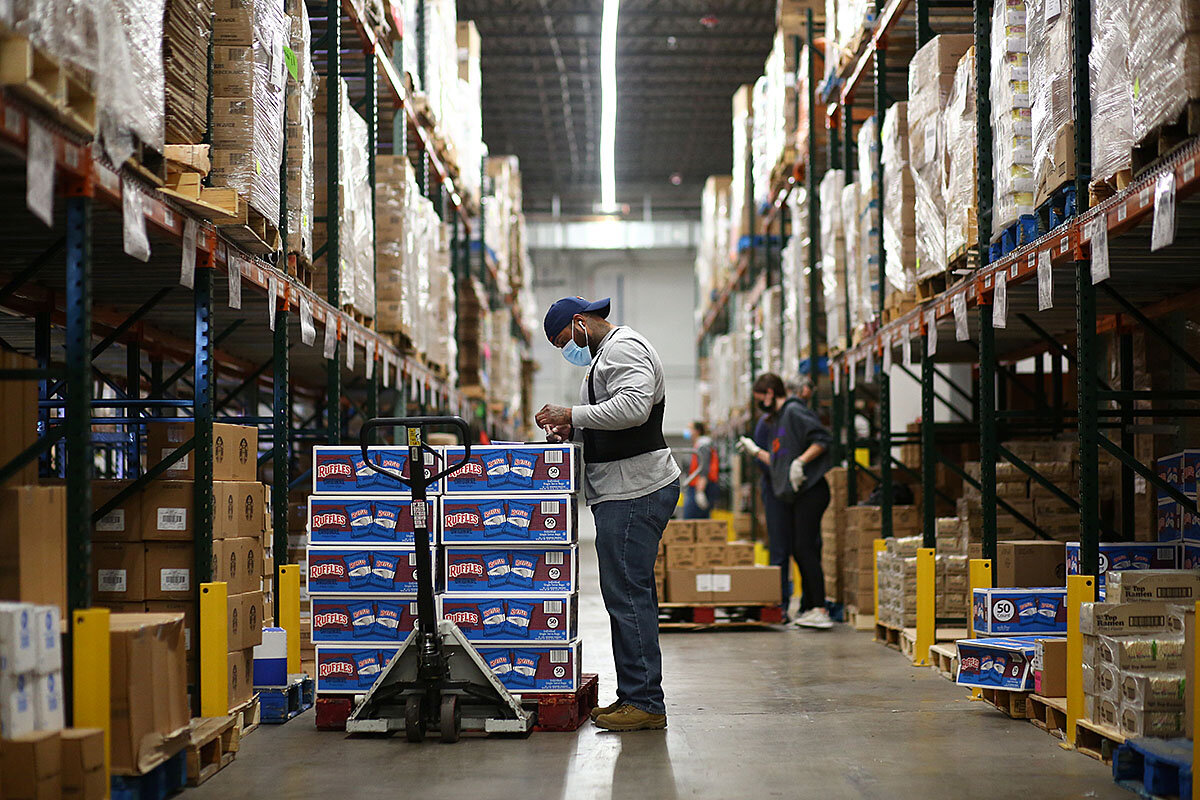
For example, of the 5.2 billion meals that Feeding America distributed in the year to June 30, about 1.7 billion came from the USDA, says Ms. Villarreal. Without government action, that source of food will shrink by half come January.
“We're looking at a sustained increase in demand, potentially even more so with some of these programs expiring, and then a potential shrinkage in supply,” says Ms. Villarreal. “The reality is that as dedicated as food banks are to their communities ... we can't do it alone.”
Adapting to the pandemic
Meanwhile, the threat of coronavirus has forced food banks to transform their operations.
Bob Biedron, a recent retiree and volunteer at the VPFB since March, has a four-step checklist: Mask on, temperature checked, hands washed, and gloves worn. He and other volunteers must stay socially distanced, so fewer can work at the same time in their cavernous warehouse.
“We have a lot of people who are food-challenged at this point in time,” says Mr. Biedron. “So it's very rewarding to give out food to people who need it.”
The VPFB almost always has enough volunteer labor, but nationwide around two-thirds of food banks face volunteer shortages, says Ms. Villarreal.
And for volunteers to work at all, there has to be food. Donations plummeted earlier in the year as corporate partners grappled with slower supply chains and fewer disposable items, and while things have improved since, food banks are now buying more food than ever before.
Then there are issues of delivery.
Before March, the VPFB delivered truckloads of food into mobile pantries, where residents could walk inside and pick up food. Now residents congregate in car-filled parking lots, with masks on and trunks open so volunteers can load boxes, sometimes playing 3D Tetris to make everything fit.
Other communities are less accessible. From March to September, more than a dozen low-income senior communities the VPFB serviced wouldn’t accept donations due to fear of transmitting coronavirus. Serving them required partnerships with other charities in the area. All in all, feeding the area has been a village effort.
Rising costs
The same is true for Ruth Jones Nichols, president and CEO of the Foodbank of Southeastern Virginia and the Eastern Shore. Demand in her area skyrocketed after March, and initially, they didn’t have enough cash in reserve.
“Almost overnight, we went from an average cost per meal of $0.40 to $3.50,” says Ms. Nichols via email. “Fortunately, the community helped us get through the first several months by giving more to support … our neighbors in need.”
A mix of staff dedication, public generosity, nonprofit partnerships, federal relief, and local government assistance has helped them rebound. Serving is still a work in progress, but Ms. Nichols finds joy in the support of local communities. One locale gave her food bank more than $2 million in funding. Another “leveraged local funds to help us serve one neighborhood that became a food desert,” she writes. "Who could have imagined this moment?”
Perhaps Ms. White, whose Thanksgiving meal came with donations from Ms. Nichols’ food bank. The leftovers became meals for the week ahead – stew, sandwiches, and a rich broth – which meant that Ms. White's two daughters could eat healthily.
“I’m not one of those noodle moms,” she says.
But Ms. White doesn’t stray from noodle soup for the soul. Like at every other Thanksgiving meal she asked her daughters to list what they were thankful for this year. The full plates in front of them were a given. “I always teach my kids it’s not about the holiday or the food," she says.

Former Boko Haram fighters deradicalized, but still unreconciled
Can radical militants be rehabilitated? Deradicalization is only part of the equation. The rest depends on wounded communities deciding whether to accept them back – and deep, difficult dialogue.
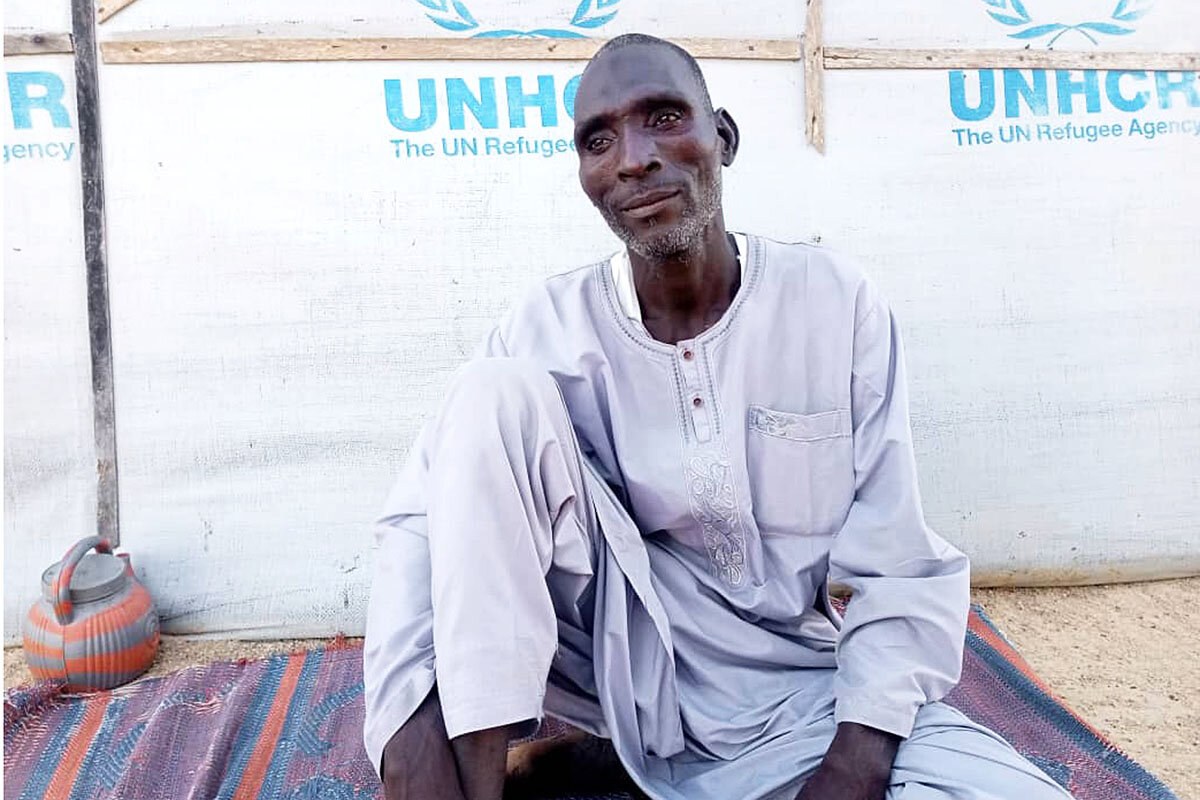
- Quick Read
- Deep Read ( 8 Min. )
-
By Shola Lawal Correspondent
-
Sani Adam Correspondent
For a decade, Nigeria’s military has struggled to stamp out the threat of Boko Haram, the Islamist insurgency that has killed more than 30,000 people. Yet its powers have been significantly clipped, and hundreds of fighters have escaped its forest enclaves.
But what should become of them?
Since 2016, Nigeria has run Operation Safe Corridor, a deradicalization program designed for ex-fighters deemed non-threats. Participants (referred to as “clients”) go through therapy, religious re-education, and literacy and vocational skills training. Hundreds have completed the course, touted as a way to reintegrate repentant fighters.
Yet it’s vehemently opposed by many citizens, and unclear how many “graduates” have really returned to their communities. Many residents insist they cannot put Boko Haram’s atrocities behind them and heal while living with their attackers, especially as some areas continue to experience attacks.
What is most lacking, critics point out, is support for rehabilitation – especially deep community dialogue.
“Without justice, there can’t be any forgiveness,” says security analyst Audu Bulama Bukarti. And justice, in the eyes of many survivors, has yet to arrive.
Former Boko Haram fighters deradicalized, but still unreconciled
When Ibrahim Dubji began the journey home to Gwoza in 2017, he was bubbling over with conflicting emotions.
There was the joy that his daughter was getting married – and the dread of seeing neighbors who had lost loved ones to Boko Haram. Mr. Dubji had fought for the terror sect for years after being conscripted, he says. But in the past few months, he had completed a state-sponsored deradicalization course. He was returning a new man.
The people of Gwoza thought otherwise. At the entrance of the fragile town, devastated from years of raids and brutal attacks, soldiers positioned at the gates arrested and questioned him: Why had he come back? Was he still a fighter? After a night in detention, Mr. Dubji was thrown out of Gwoza, away from his daughter’s wedding, the house he built, and his family.
“They told me I won’t enter even though I provided evidence that I have been cleared,” says a still-stunned Mr. Dubji. He sits on a mat in the camp for people who have been displaced that’s now his home, a city of tents tucked into a corner of Maiduguri, the city at the heart of the insurgency. Mr. Dubji’s face is gaunt, eyes sunken into sockets. “Since I had been cleared I don’t see any reason why they denied me entry to the town.”
Hundreds of former fighters like Mr. Dubji have undergone the government’s course, touted as a way to reintegrate repentant fighters. Yet it’s vehemently opposed by many citizens, and unclear how many “graduates” have really returned to their communities – and how many are floating around northeast Nigeria, unable to go home.
Since 2016, the Nigerian military has run the 16-week course, Operation Safe Corridor (OPSC), in the sleepy northwest city of Gombe, away from the bloodshed farther northeast where Boko Haram factions lay claim. With OPSC, the government hopes to help low-risk defectors live again in the communities they left behind, by teaching them to let go of extremist ideals. The program is also a soft strike at the terror group, an attempt to frustrate recruiting activities and encourage more foot soldiers to surrender.
But to deliver on that promise, critics say, OPSC must reform. Successful reintegration depends on two things: defectors themselves, and the towns being asked to reaccept them, even as they struggle to heal – which will require deep dialogue and cooperation.
“Without justice, there can’t be any forgiveness,” says London-based security analyst Audu Bulama Bukarti, of the Tony Blair Institute for Global Change. And justice, in the eyes of many survivors, has yet to arrive.
From combatants to clients
Over the past decade, Boko Haram’s Islamist insurgency has killed more than 30,000 people and displaced 2.5 million. The Nigerian military has struggled to stamp out the threat, as Boko Haram factions continue to recruit volunteers and capture forced conscripts. But the group’s powers have been significantly clipped over the years, and hundreds of fighters have escaped its forest enclaves.
More than 600 ex-fighters graduated from OPSC by August 2020, with some 2,000 men currently enrolled or being prepped for the course. About 90 child soldiers have been transferred to a separate, shorter deradicalization, rehabilitation, and reintegration program set aside for women and children, run by international organizations including UNICEF.
Once detained, or after turning themselves in, repentant fighters undergo a profiling process and appear before a judicial panel to provide testimonies. The process helps the military determine their level of radicalization.
“Those captured in combat are processed for prosecution, but the ones that have not been ideologically indoctrinated because they were conscripted, they were abducted, are the ones being rehabilitated,” army spokesperson Brig. Gen. Onyema Nwachukwu explained to local media in February. “They call them low-risk combatants. Those do not buy into Boko Haram agenda; they were forced into it. These repentant members have been assisting the military by providing intelligence on Boko Haram activities.”
After being certified non-threats, participants (referred to as “clients”) go through therapy, religious re-education, and literacy and vocational skills training. Mr. Dubji, who learned to make perfumes and soaps, says the last was most important for him. Poverty and a lack of opportunities in the arid region have motivated many men to join groups like Boko Haram. Mr. Dubji’s case is different since he’s a forced conscript, but he says those skills helped him start a small trading business he survives on – though the startup loan that the Borno state government had promised never came.
OPSC’S funding information is not public; an email requesting funding details from the program director, Maj. Gen. Bamidele Shafa, as well as other information about OPSC received no response. In February 2020, the legislature announced a bill to establish a national agency devoted to rehabilitation, though there has been no further deliberation.
Funds for survivors
But OPSC has received major backlash, on everything from its existence to its administration. Many Nigerians say the program diverts much-needed funds to people who do not deserve them amid a recession. Politicians from the states worst-hit by Boko Haram have voiced their displeasure, and there is heavy pressure from civil organizations to abandon the bill and divert funds to survivors.
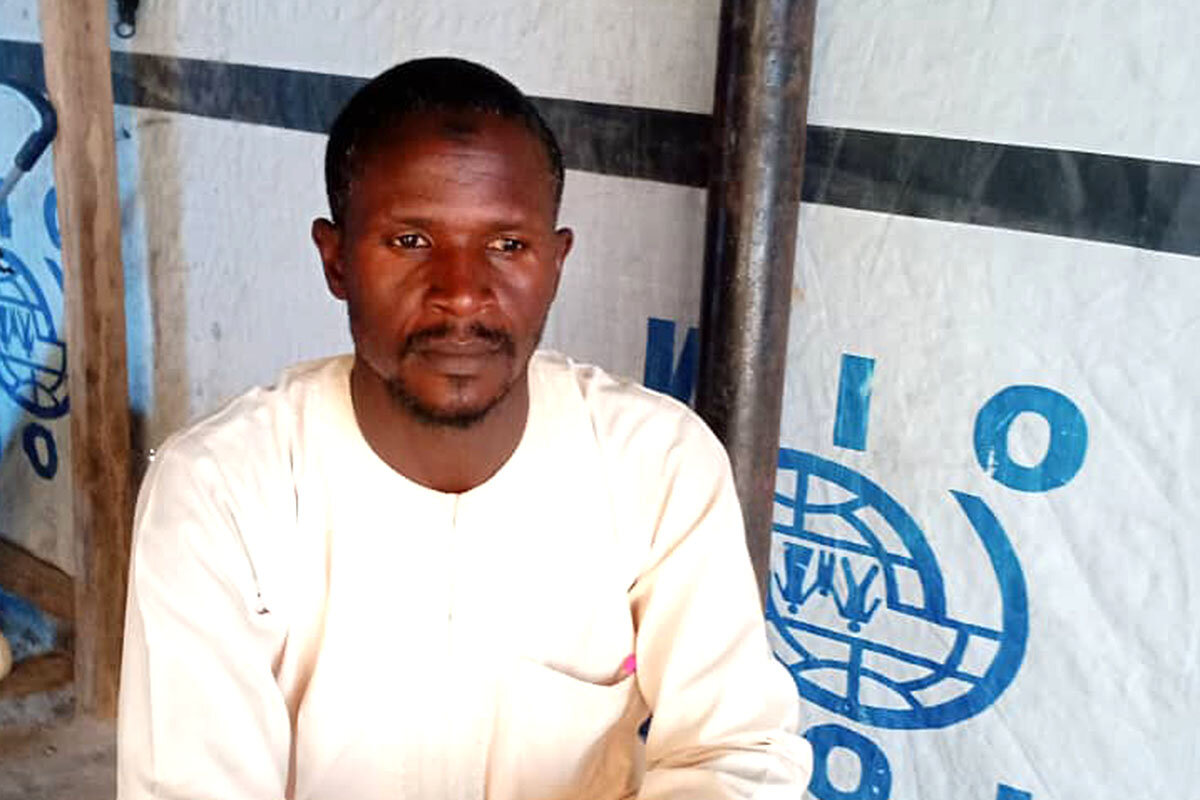
Nigeria’s northeast, the site of most fighting, faces a looming food crisis, and is home to many of the country’s poorest and least literate communities. Many residents insist they cannot put Boko Haram’s atrocities behind them and heal while living with their attackers, especially as some areas continue to experience attacks.
“Bringing them [ex-fighters] here is very wrong,” says Mohammed Buba Dada, a Gwoza businessman. “They are the set of people that burned our homes, they are the reasons we left our community, and they are the people still being used to kill our relatives, our mothers, our children, our wives, our sons. It’s a good thing the government empowers them, but one thing that’s not fair is bringing them to stay at our side again.”
Gwoza, near the border with Cameroon, is particularly devastated. In 2014, when the sect claimed the area as the headquarters of its caliphate, fighters slaughtered hundreds of people in the public abattoir. Mr. Dada’s brother was killed and his cousin is still missing. The military claims Gwoza is now safe, but many stay back in Maiduguri camps, still fearing attacks – the same camps housing some ex-fighters like Mr. Dubji.
The government has not been transparent enough about the program, muddling an already tense situation, some analysts say. “There are issues around financial transparency and accountability and there’s the lack of an explicit curriculum on what’s to be done at each stage or how to measure impact,” says Mr. Bukarti, a northeasterner himself and one of few outsiders to step foot in the Gombe camp. “You don’t have a scientific way to determine if they are ripe for integration.”
There are also questions about some of the men painted as ex-fighters, points out Murtala Abdullahi, another security analyst from the region, and Mr. Bukarti. Local observers speculate that participants could include some of the thousands of men whom rights groups accuse the Nigerian army of randomly arresting and torturing in the first years of the insurgency.
Others point out that stigma and poverty could drive defectors back to Boko Haram. As for Mr. Dubji, he has no plans to return. What he wants is forgiveness and acceptance. But it may be too late.
“The way they killed and slaughtered people in our community, it’s like they’ll never become like normal humans again,” says Abdullahi Abdullahi, a trader in Maiduguri (not related to the security analyst). “What I will tell the government to do is extend the time of [deradicalization]. Creating another place for them is the best idea. They killed our loved ones. I don’t think we will accept them again in our community.”
Justice, then forgiveness
Yet some observers insist OPSC is crucial and has achieved some level of success. Mr. Bukarti doubts any graduates have fully reintegrated, but affirms that the program can combat extremist ideologies, noting that men he spoke to on his visit in 2018 were eager to read and speak to him in English – the kind of secular Western education that Boko Haram kills for.
Save for continued detentions – or outright extrajudicial killings, for which human rights organizations have hounded the Nigerian military – there are few other options for “solving” the problem of thousands of ex-fighters, analysts say.
“A lot of the pushback we are seeing is very emotional, but what is the security implication of neglecting such people [ex-fighters] who are probably dealing with psychological issues?” asks Tanwa Ashiru, founder of Bulwark Intelligence, which provides defense and security services.
What is most lacking, critics point out, is support for rehabilitation – especially community engagement. Many victims continue to face attacks and languish in camps, without a clear process or funds to help restart their lives. OPSC may re-tune minds, but it fails at reintegration because there’s no agency tasked with preparing communities, Mr. Bukarti points out.
“You need to rehabilitate members of communities, restore livelihoods, and then start discussing with communities if they want some traditional form of justice, forgiveness, and reconciliation mechanism facilitated by government,” he says. “Displaced victims tell me, ‘The government feels Boko Haram are better than us. We have lost everything we have and Boko Haram is given preferential treatment. They are better than us economically. They have been psychologically treated while no one has treated us.’”
Appeasing communities, all three analysts say, will take the military eliminating Boko Haram, firstly. It will take clear communication on the program’s risks, costs, and effectiveness. And it will take counseling, dialogue, and community-focused sentencing to ensure they feel justice is meted out. Survivors care little about evidence in courts, or the fact that ex-fighters probably played minor roles in Boko Haram.
Gacaca courts, used after the Rwandan genocide, may offer lessons, although they faced their own criticisms. Based on traditional models of restorative justice, the courts – whose judges did not need legal training – would oversee confession, assign sanctions, and often prescribe community-based reparations. Ex-Boko Haram fighters could also be sentenced to community service, Mr. Bukarti suggests, such as rebuilding destroyed schools and houses.
Ultimately, if communities don’t want ex-fighters, they should be resettled elsewhere, Ms. Ashiru says.
“There’s a lot of psychological hurt so you can’t do things haphazardly,” she says. “Before bringing these guys back there must be psychological help and you need to seek the community’s blessings. It’s one issue our governments have; they’re not too keen on listening.”

The human touch: Choosing handcraft over machines
Can optimism help build better furniture? One Vermont business has made its name internationally on the approach – and has brought its employees a measure of peace.
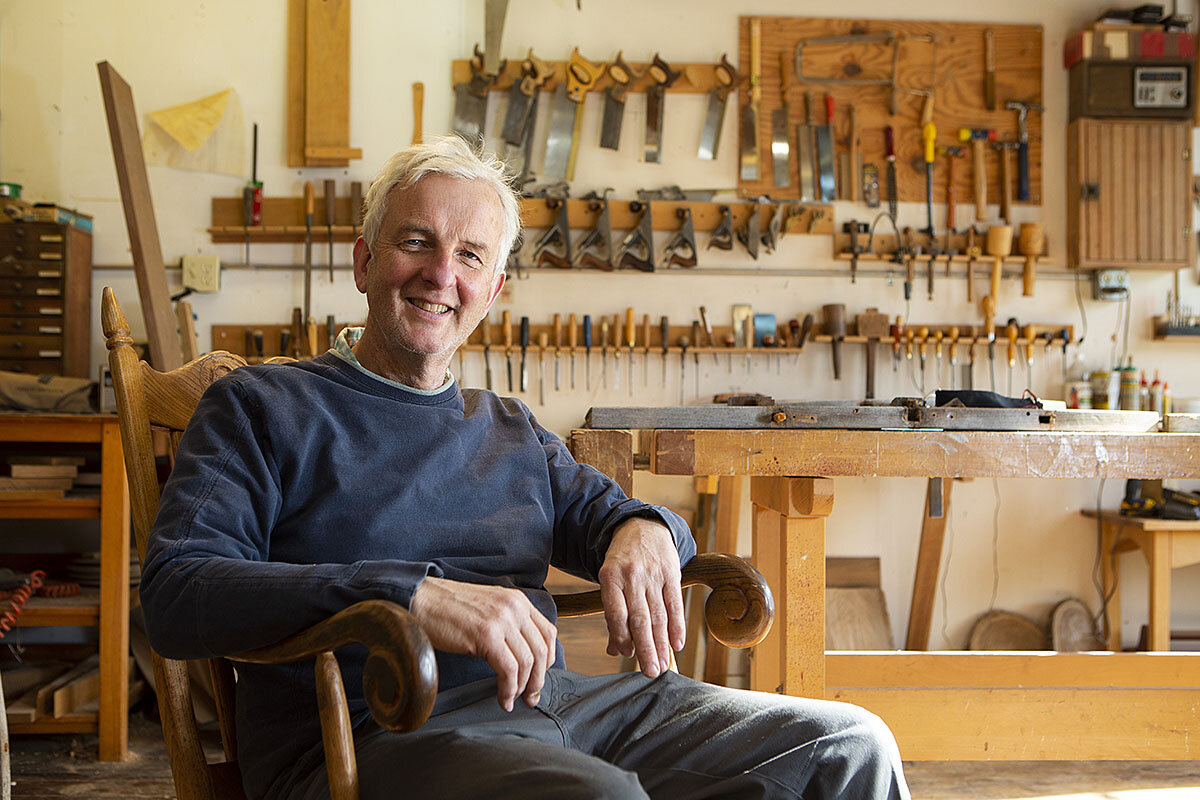
- Quick Read
- Deep Read ( 5 Min. )
-
By Gareth Henderson Correspondent
Optimism, persistence, and handwork. These keys to success have seen ShackletonThomas, a furniture-making and pottery business, through decades of ups and downs, including the shutdown earlier this year of its production shops due to the pandemic.
It’s not that quitting has never occurred to the owners, but they have yet to give in to the urge – in large part because the work itself rejuvenates them.
For Charles Shackleton and his wife, Miranda Thomas, who run the furniture and pottery operations, respectively, their work centers on the human touch, from design to finish.
“We believe when human beings make things, they have a character to them,” Mr. Shackleton says. “It passes on a little piece of soul, if you will.”
While the process happens in Vermont, the finished work is recognized for its beauty well beyond local borders. For example, Ms. Thomas once created a peace bowl that then-President Bill Clinton presented as a gift to Pope John Paul II.
That level of quality flows from the hands that create it. Or as their former furniture-shop manager puts it, “It’s a part of you going into somebody else’s home, and you want it to be the best part of you.”
The human touch: Choosing handcraft over machines
“Optimism is true moral courage.” That’s a quote from the great Antarctic explorer Ernest Shackleton, who learned that, sometimes, the mere act of pressing on goes a long way when facing challenges. His descendant, Charles Shackleton, agrees.
“My biggest lesson from him is being able to get out of bed and put one foot in front of the other and just do it – and stuff will happen,” Mr. Shackleton says.
Optimism plus persistence has been a winning formula in uncharted waters for Mr. Shackleton and his wife, Miranda Thomas, who are at the helm of ShackletonThomas, the international business that has produced handcrafted furniture and pottery for more than 30 years out of Bridgewater, Vermont, by the scenic Ottauquechee River. The other key to success is their focus on the human touch, from design to finish.
The big challenge this year came in mid-March, when the governor’s executive order shut them down for about a month. “That was a hard hit, but we’d just shipped a lot of stuff, and we had a lot of orders,” Mr. Shackleton says.
When state rules permitted it, both workshops slowly ramped up production, with lots of work to complete. Thanks to the federal Paycheck Protection Program, they were able to keep paying their staff of about 15, and the normal flow of production had mostly returned by early November.
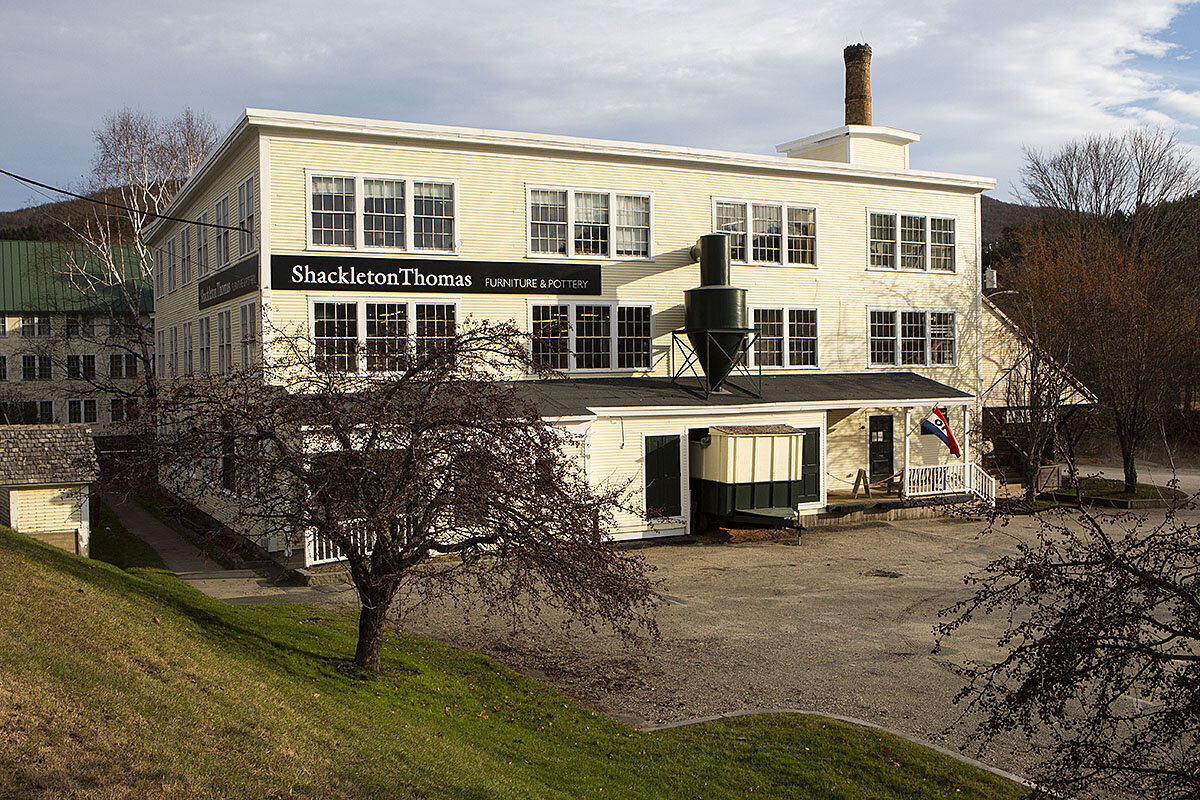
You wouldn’t know that for two years, the couple had been thinking of selling their part of the condoized historic Bridgewater Mill Mall property, largely because of all the exterior work it needed, including a new roof. But eventually both of their buildings got a fresh coat of paint, and Mr. Shackleton and Ms. Thomas used a loan and some of their own money to fund the roof work.
The turning point came when the exterior work began, Mr. Shackleton recalls. “We started looking at the whole thing like, ‘This is a treasure,’ whereas a year ago we were ready to give it away.”
That human touch
While painting intricate lines depicting wildlife on the outside of a mug, Ms. Thomas notes that pottery, one of the most ancient arts, takes on a deeply human feeling instilled by the one crafting it.
“There’s an energy, and if you can get that energy across, that feeling, then everybody’s happy,” she says.
For Mr. Shackleton and Ms. Thomas, who run the furniture and pottery operations, respectively, their work is the result of skilled makers, not a mechanized factory line. That lends a special human element you don’t get otherwise, Mr. Shackleton says.
“We believe when human beings make things, they have a character to them,” he says. “It passes on a little piece of soul, if you will.”
While the process happens in Vermont, the finished work has gone well beyond local borders. For example, Ms. Thomas once created a peace bowl, with a special design of peace doves, that then-President Bill Clinton presented as a gift to Pope John Paul II during the pope’s visit to St. Louis in 1999. Her pottery was also part of the celebration of Kofi Annan’s 2006 retirement from the United Nations as secretary-general.
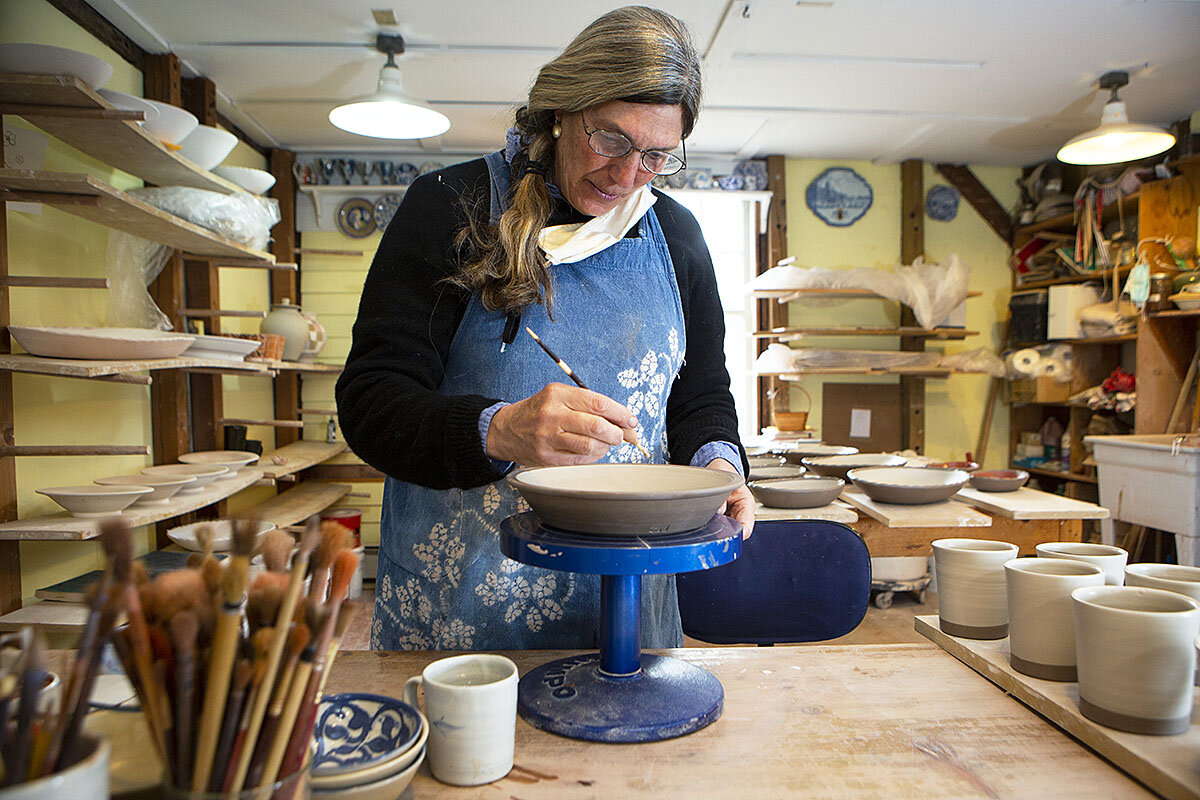

It’s no small thing to carry on that legacy of precision and utmost quality, and now the owners’ son, Hugh Shackleton, is doing so as shop manager on the furniture side, after joining the operation more than four years ago and learning the craft.
“The coolest thing is seeing what people can create,” Hugh Shackleton says. “We are artists.”
His son’s arrival and subsequent shop-manager role were huge steps forward for the business, Mr. Shackleton says.
“It saved the business, because he brought in young inspiration, and he’s completely passionate about making things, designing things, and he’s really good at management,” Mr. Shackleton notes.
Hugh Shackleton took over the shop-manager reins from Marty Higgs, who’s worked there for 24 years and recently began training his son on furniture-making. For Mr. Higgs, the workshop has been a place of “peace and refuge.”
“There’s nothing really more relaxing than hand-planing a large tabletop,” he says, noting the side-to-side rhythm of the work and the slight “ringing” sound. “The emphasis isn’t so much on getting things done quickly, but getting things done so they’re beautiful when finished – and highly functional as well,” he adds.
Now, Mr. Higgs’ son is also enjoying that process. He finished his first table with his father’s guidance in late October.

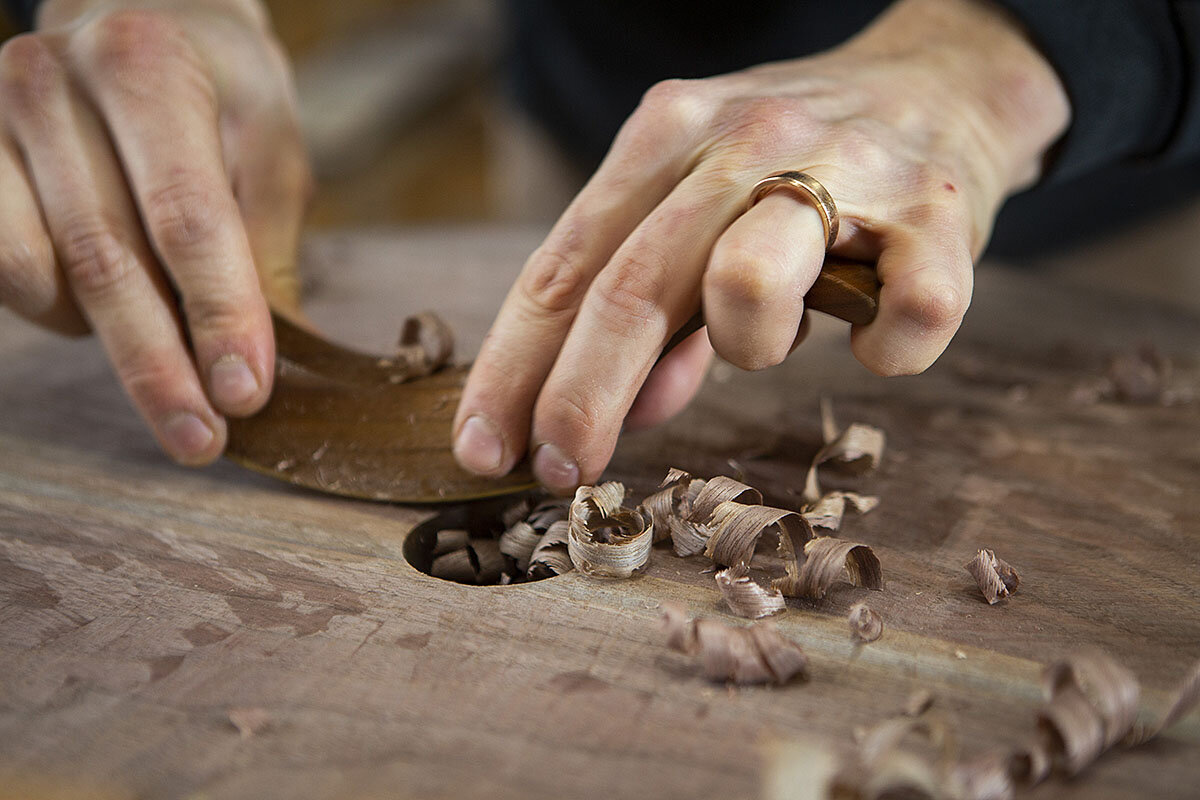
“It’s been nice for me, especially in such a tumultuous year, to have ... some peace and focus, something to witness,” August Higgs says.
Staying the course
It takes time to build two renowned brands, and for Mr. Shackleton and Ms. Thomas, the journey began more than three decades ago. She met Mr. Shackleton, who hails from Ireland, at college in England, where they ended up in the same pottery class. After coming to Vermont at different points in the 1980s, they each ended up working for the famous craft entrepreneur Simon Pearce, who was an important mentor for them both as a craftsperson and business owner.
“Simon really talked us into it,” Ms. Thomas says, recalling striking out on their own in 1987. “He helped us get there, and we couldn’t have done this, I don’t think, without Simon.”
After taking that step, they also made a commitment to stick with handcrafting.
“We didn’t want it to become a commercial, mechanized thing, so we decided to stay with handwork,” Ms. Thomas says.
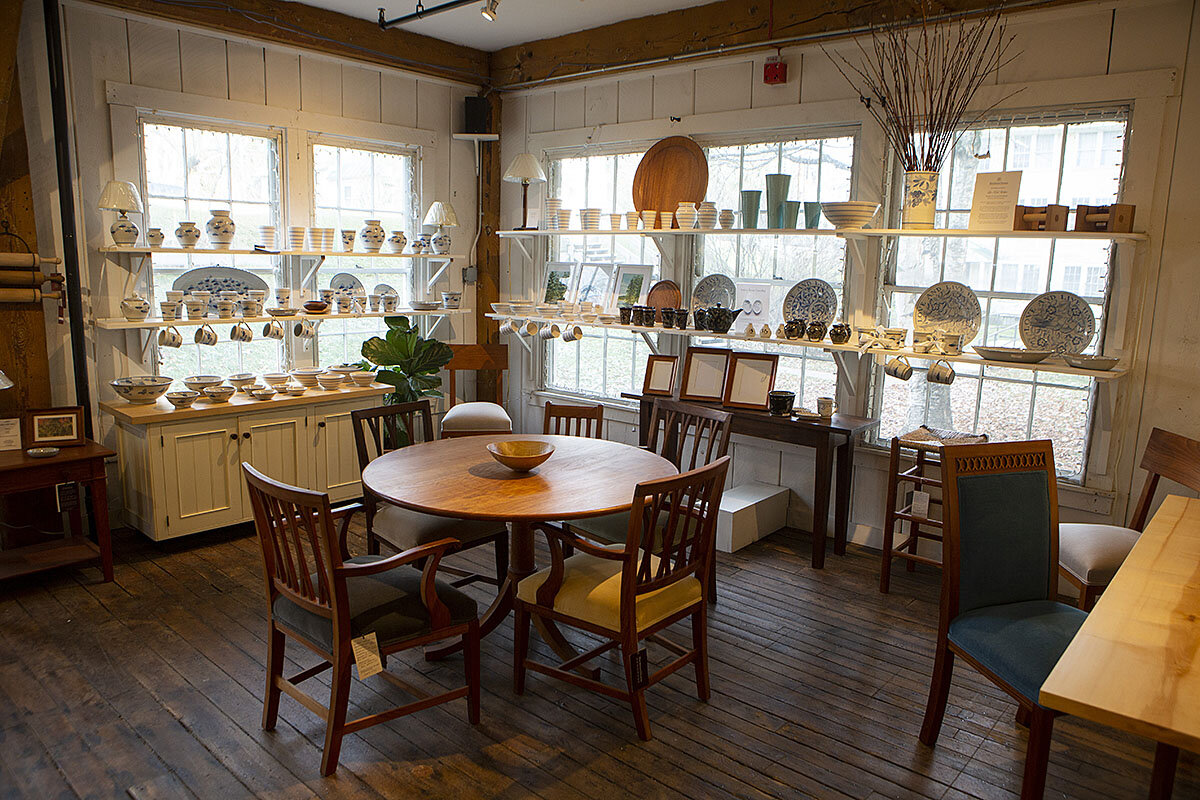
Not everyone has done the same, but this husband-and-wife team has persisted in the approach that propelled their success.
“We have made ourselves champions of the small-production workshop … and I say ‘champions’ because that’s been a goal, to really do that, so you’re putting out on the market some incredible quality,” Ms. Thomas says.
That quality flows from the hands that create it. For Marty Higgs, there’s a lasting connection between him and the pieces he crafts and signs.
“It’s a part of you going into somebody else’s home, and you want it to be the best part of you.”

Difference-maker
Coat as shelter: Designer Bas Timmer creates for people who have no home
For this Dutch designer, a vocation became a mission after an experience that changed his perspective. Now, he wants to protect homeless people the world over with his ingenious creation.
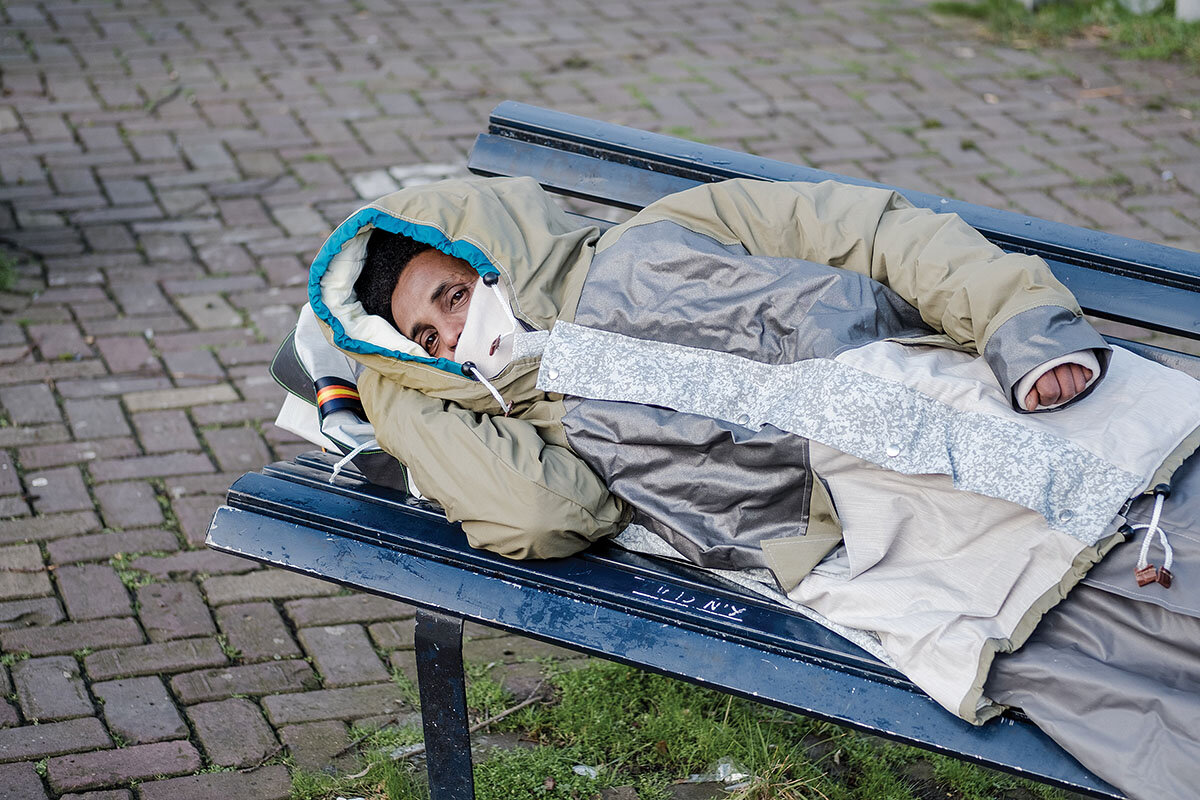
- Quick Read
- Deep Read ( 5 Min. )
-
By Anne Pinto-Rodrigues
Bas Timmer was already working on winter wear as a designer in the Netherlands. But when the father of his close friends died, outdoors, from the cold, his mission became prevention of needless deaths among homeless populations. Since 2014, his foundation has distributed more than 12,000 warm, waterproof Sheltersuits around the world.
A sleeping bag attaches to the lower edge of the jacket, which ensures full-body protection against harsh temperatures. The exterior is made of high-quality, donated, leftover tent fabric, while the insides are typically lined with clean, old sleeping bags, donated or collected at festivals.
Two factories – one in the Netherlands and a new facility in Cape Town, South Africa – employ a total of 21 men and women. Most of them are refugees or have experienced homelessness. After a social science research project revealed concerns about people trading or selling their suits, a new program will have some shelter facilities owning the suits for distribution to those they cannot house.
“We want to redefine what ‘shelter’ means to the homeless person,” says Mr. Timmer. “I want to make the Sheltersuit a tool to integrate the homeless into society.”
Coat as shelter: Designer Bas Timmer creates for people who have no home
Dutch clothing designer Bas Timmer has seen some tears in his line of work. But they have mostly been tears of joy.
During a visit to Cape Town, South Africa, Mr. Timmer met a woman who had lived her adult life on the streets, and was often cold and uncomfortable. Despite her disabilities, she managed to get by. While there was little he could do to change her circumstances, he could offer her a bit of warmth. So he gifted her one of his creations – a windproof and waterproof jacket that he had designed, called the Sheltersuit – and taught her how to use it.
When he checked on her a few days later, Mr. Timmer says she broke down, crying. She “was finally warm and cozy,” he says.
With over 12,000 such suits distributed by Mr. Timmer’s Sheltersuit Foundation since 2014, he has had several such interactions, though none quite as emotional as his encounter in Cape Town. The suits have been handed out to people experiencing homelessness in the Netherlands; Lesbos, Greece; Sarajevo, Bosnia-Herzegovina; Edinburgh, Scotland; and London, as well as New York, Chicago, San Francisco, and a few other cities in the United States.
The foundation distributes the suits to people in need free of charge. While the Sheltersuit does not address the root causes of homelessness, it provides much-needed comfort to those on the streets. “Every human being deserves warmth, protection, and dignity,” says Mr. Timmer.
The Sheltersuit comes with a sleeping bag that attaches to the lower edge of the jacket, which ensures full-body protection against harsh temperatures. The exterior is made of high-quality, leftover tent fabric donated by TenCate Outdoor Fabrics, while the insides are typically lined with old sleeping bags, donated or collected at festivals, after they have been cleaned. “Imagine being homeless during a Dutch winter, having to sleep outside in the bitter cold and pouring rain,” says Mr. Timmer. He has also designed a lighter version of the suit, called the Shelterbag, for use in warm weather.
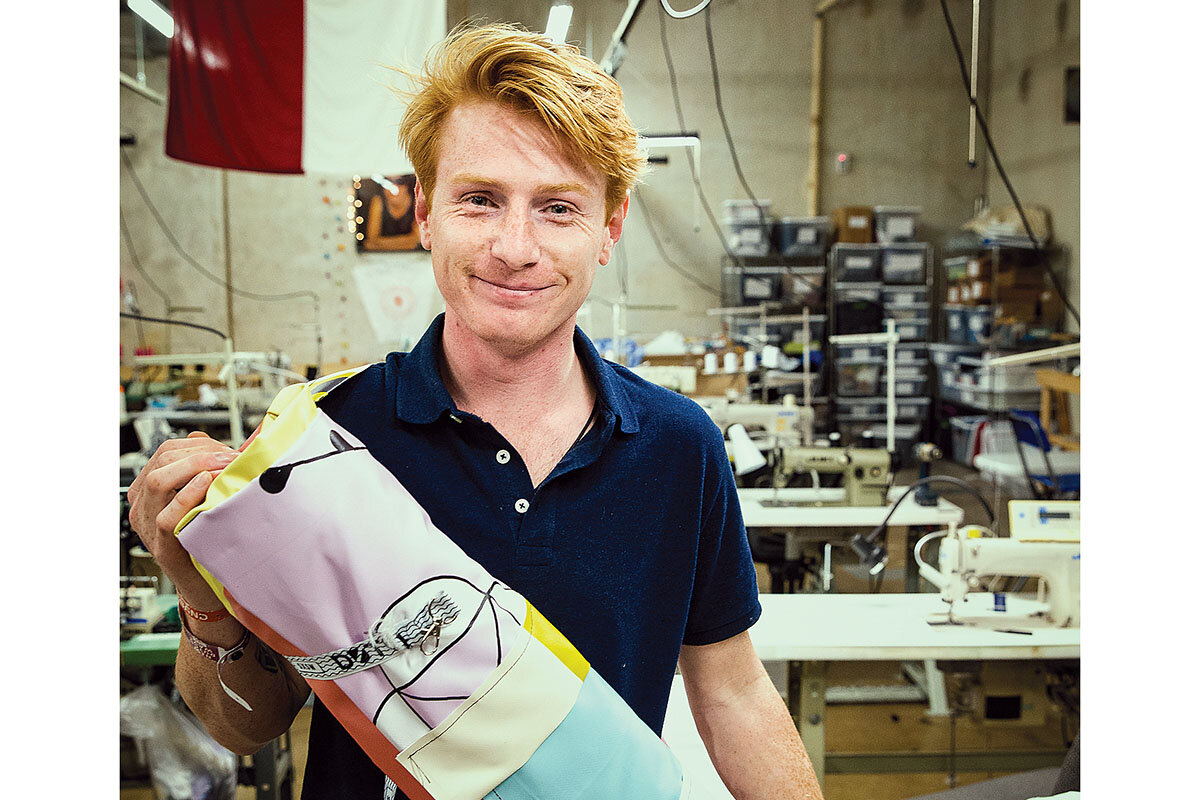
A personal reason
Mr. Timmer was spurred to develop the Sheltersuit in 2014, when the father of two of his dear friends died of hypothermia on the streets. At the time, he had just started working as a designer of warm winter wear and felt compelled to create a product that would prevent such needless deaths.
“I had my fears initially, but my mother encouraged me to follow my heart. She motivated me to design the first Sheltersuit.” Mr. Timmer says he inherited his creativity and entrepreneurial spirit from his parents, both of whom worked in the textile industry.
In the Netherlands, some 40,000 people have registered as rough sleepers of varied circumstance. Poverty plays a key role, but so does mental illness in many cases. This number does not include young people unwilling to register as homeless, or asylum-seekers refused legal refuge.
During the pandemic, the need for more shelter space became acute: While shelters did not want to encourage rough sleeping, there simply wasn’t enough room inside. Shelter facilities began requesting the suits to protect those they could not accommodate.
“The priority became to shelter the homeless where they were,” says Mr. Timmer. Since March, the Sheltersuit Foundation has distributed nearly 2,000 Sheltersuits and Shelterbags to shelters and homeless people in the Netherlands and South Africa.
Currently, Sheltersuit operates two manufacturing facilities: the original factory in Enschede in the Netherlands and a newer one in Cape Town. The Sheltersuit Foundation is also exploring partnerships in the U.S., United Kingdom, and Australia.
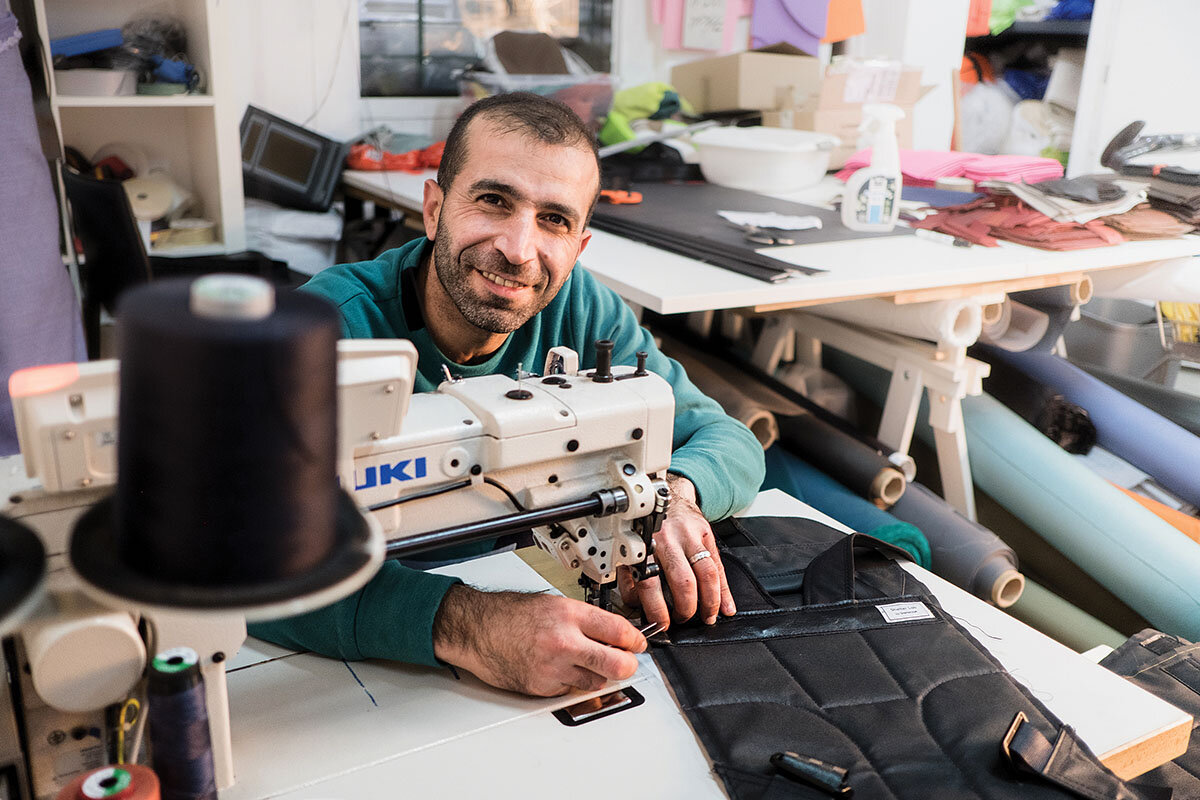
The Dutch factory has 14 employees, most of whom are refugees or people who have experienced homelessness. “All donations to the Sheltersuit Foundation go to pay the salaries of the Sheltersuit makers. Besides job training, we also provide them with Dutch-language lessons and help them settle into Dutch society,” Mr. Timmer says.
The factory in South Africa has seven local seamstresses, most having experienced joblessness and homelessness. “When we completed the pilot production of 250 suits in South Africa, one of the seamstresses was sobbing,” says Mr. Timmer. “She shared that she finally had the money to buy shoes for her son, so he could play football. Imagine how much we can multiply this happiness when we scale up with the right partners.”
Gearing up production
A Shelterbag costs one-third of a Sheltersuit to make in the Netherlands, about €100 ($120). In South Africa, the bag can be made for €30. “We needed to be in a country with a lower cost of production, to manufacture on a large scale,” says Mr. Timmer. After having partnered with UNICEF, the Red Cross, and other global organizations on a small scale, Mr. Timmer now hopes to be able to gradually meet greater demand.
Femke van Stratum, a communications adviser, evaluated the Sheltersuit model as part of her master’s thesis work in psychology and communication sciences at the University of Twente in the Netherlands. “In my research, I found that overall, social workers in the Netherlands were positive about the Sheltersuits being given to homeless people,” she says. “But there were some concerns about people trading or selling their suits. To minimize this risk, the social workers suggested that the suits should only be given to those who cannot sleep at a shelter, like those with a dog, or to those who do not want to sleep at a shelter for various reasons.”
Cooperative concept
To address some concerns about distributing Sheltersuits directly, Mr. Timmer plans to pilot a new distribution model developed after discussions with a Dutch shelter organization and local homeless people. Under this model, shelters retain ownership of the suits and can add optional trackers to be able to check in on and make deliveries to individuals on the street. “We want to redefine what ‘shelter’ means to the homeless person,” says Mr. Timmer. “We aim to make [the Sheltersuit] a service, rather than a product.” This may help shelter facilities build relationships with clients. “I want to make the Sheltersuit a tool to integrate the homeless into society.”
Mr. Timmer was recently recognized by Time magazine as one of their Next Generation Leaders for 2020. “I want to protect every homeless person in the world, in a socially and environmentally responsible manner,” he says.
Other headline stories we’re watching
(Get live updates throughout the day.)The Monitor's View
Britain’s stroke against luck
- Quick Read
- Deep Read ( 2 Min. )
-
By the Monitor's Editorial Board
Britain’s government plans to help those who may need special help in tapping their talent, skill, and discipline. It wants to reduce the number of problem gamblers, or those who regard luck as a quick way to wealth. On Dec. 8, it announced the biggest shake-up of betting laws in 15 years. The first step was to raise the minimum age for buying lottery products from 16 to 18. One possible plan is to cap gamblers’ losses to as little as £100 ($133) a month.
Other ideas include tougher advertising regulations and restrictions on promotional offers. The plans are even more urgent because the gaming industry has shifted swiftly toward online play during the COVID-19 lockdowns.
Britain’s hopes for its innovation economy will require a stronger emphasis on the country’s work ethic and creativity. One path to solid growth includes helping all gamblers realize the false promises of luck and lifting problem gamblers out of debilitating addiction. Their future is brighter if they learn to value their own inherent merit and talent.
Britain’s stroke against luck

Soon after the pandemic hit Britain last spring, the government decided to prepare for a post-pandemic economy. It poured $1.5 billion into protecting startup companies, or entrepreneurs with the talent, skill, and discipline to spot new opportunities. The aid was also part of a plan to ensure Britain becomes better known for its “innovation economy” after leaving the European Union. On a global index for innovation, Britain already ranks fourth.
Now the government of Prime Minister Boris Johnson plans to help those in Britain who may need special help in tapping their talent, skill, and discipline. It wants to reduce the number of problem gamblers, or those who regard luck as a quick way to wealth. On Dec. 8, it announced the biggest shake-up of betting laws in 15 years.
The first step was to raise the minimum age for buying lottery products from 16 to 18 starting next year. The government itself, said Nigel Huddleston, minister for sport, tourism, and heritage, must ensure the National Lottery is “not a gateway to problem gambling.” About 1 in 20 children from ages 11 to 16 are considered either problem gamblers or “at risk.” Child gambling is plunging tens of thousands of families into a “tidal wave of misery,” according to an all-party parliamentary group on gambling-related harm. A gambling-addiction clinic dedicated to young people opened in London last year.
One possible plan is to cap gamblers’ losses to as little as £100 ($133) a month. This would force the betting industry to act more forcibly against gambling addiction. “The time has come for the industry to be made accountable for any damage it causes,” says Carolyn Harris, a Welsh Labour Party member of Parliament. More than a quarter of a million people in the United Kingdom are addicted to gambling. And perhaps because of the pandemic’s uneven effects on women, the rate of addiction for women is increasing at twice that for men.
Other ideas include tougher advertising regulations, restrictions on promotional offers, and safeguards in game design to prevent addiction. The government’s review of gambling rules might result in the industry paying more for addiction research and treatment. Only about 3% of problem gamblers are receiving treatment, according to the National Gambling Treatment Service.
The government’s plans are even more urgent because the gaming industry has shifted swiftly toward online play during the COVID-19 lockdowns. “This wide-ranging review is a long overdue opportunity to clean up our outdated gambling laws, which are incompatible with the smartphone era,” according to Matt Zarb-Cousin of the Clean Up Gambling campaign.
Britain’s hopes for its innovation economy will require a stronger emphasis on the country’s work ethic, creativity, and economic productivity. One path to solid growth includes helping all gamblers realize the false promises of luck and lifting problem gamblers out of debilitating addiction. Their future is brighter if they learn to value their own inherent merit and talent, the core resource for innovation.

A Christian Science Perspective
Each weekday, the Monitor includes one clearly labeled religious article offering spiritual insight on contemporary issues, including the news. The publication – in its various forms – is produced for anyone who cares about the progress of the human endeavor around the world and seeks news reported with compassion, intelligence, and an essentially constructive lens. For many, that caring has religious roots. For many, it does not. The Monitor has always embraced both audiences. The Monitor is owned by a church – The First Church of Christ, Scientist, in Boston – whose founder was concerned with both the state of the world and the quality of available news.
Arise to Love’s providing
- Quick Read
- Read or Listen ( 1 Min. )
-
By Elizabeth Mata
If we’re feeling skeptical or doubtful that good is in store for us, we can let God inspire in us a conviction in “the divine spring of supply ... which excludes no one,” as this poem highlights.
Arise to Love’s providing
Famine-engulfed land, parched and
rainless when Elijah, beacon-prophet,
heard God’s divine directive: “Get up
and go to Zarephath...I have ordered
a widow there to take care of you.”* So
indisputable, he just up and left,
any skepticism he may have felt
now voiceless to his meekness.Get up. Latin surgere – to rise; arise;
get up – root word for “source” prods
me. God, divine Love itself, impels
deep within an immovable certainty of
Love as the one everywhere present
source, an ever flowing supply of
abundant spiritual good for God’s
children – everyone, then and now.The widow with slim pickings, about
to make something for herself and son
to eat, then die, when Elijah said to
make him something first. Perhaps
doubt lingered a moment in defense
of having so little. But turning from her
own concerns, she made him a meal
first, then for her and her son.
They all ate for days.Something rises in me, a vital sureness in
God’s endless fount, a yearning to re-source,
to go again, to go anew, afresh, every
moment to the divine spring of supply
– to get up with unreserved trust
in Love’s provision that excludes
no one.Inspired by First Kings 17:1, 7-16
*Common English Bible
Some more great ideas! To read or share an article for teenagers on the power of honesty in the workplace titled “When my boss asked me to lie,” please click through to the TeenConnect section of www.JSH-Online.com. There is no paywall for this content.

A message of love
Seasonal joy – on wheels

A look ahead
Thank you for joining us today. Please come back tomorrow when we look at how Hindu-Muslim couples in India are fighting back against sparks of intolerance.


